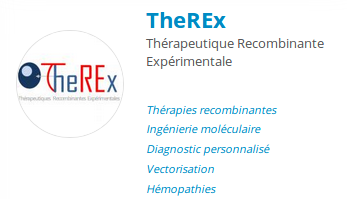[The X+ chronic granulomatous disease as a fabulous model to study the NADPH oxidase complex activation]
Résumé
Chronic granulomatous disease (CGD) is a rare inherited disorder in which phagocytes lack NADPH oxidase activity. Patients with CGD suffer from recurrent bacterial and fungal infections because of the absence of superoxide anions (O2- degrees ) generatingsystem. The NADPH oxidase complex is composed of a membranous cytochrome b558, cytosolic proteins p67phox, p47phox, p40phox and two small GTPases Rac2 and Rap1A. Cytochrome b558 consists of two sub-units gp91phox and p22phox. The most common form of CGD is due to mutations in CYBB gene encoding gp91phox. In some rare cases, the mutated gp91phox is normally expressed but is devoided of oxidase activity. These variants called X+ CGD, have provided interesting informations about oxidase activation mechanisms. However modelization of such variants is necessary to obtain enough biological material for studies at the molecular level. A cellular model (knock-out PLB-985 cells) has been developed for expressing recombinant mutated gp91phox for functional analysis of the oxidase complex. Recent works demonstrated that this cell line genetically deficient in gp91phox is a powerful tool for functional analysis of the NADPH oxidase complex activation.


